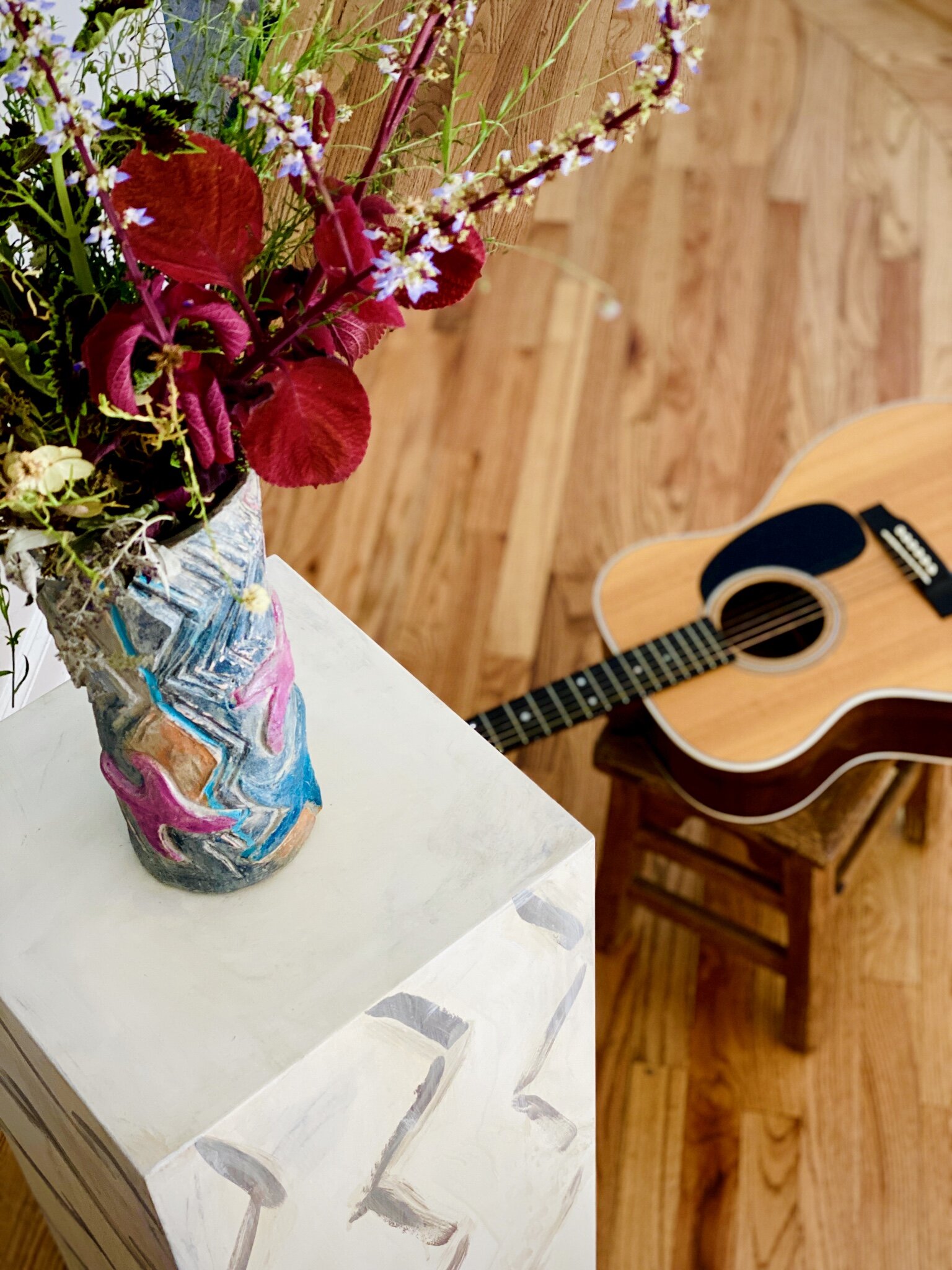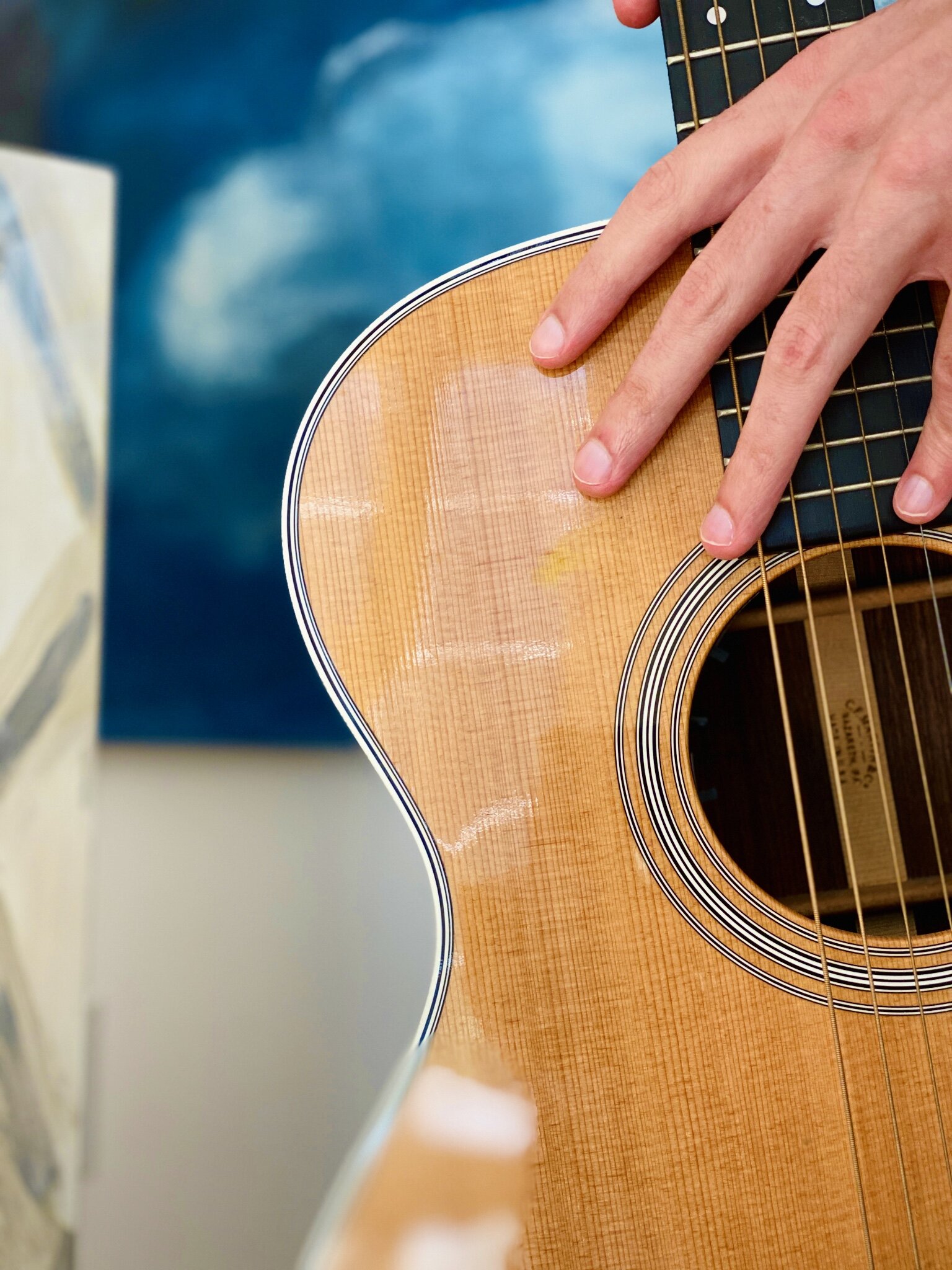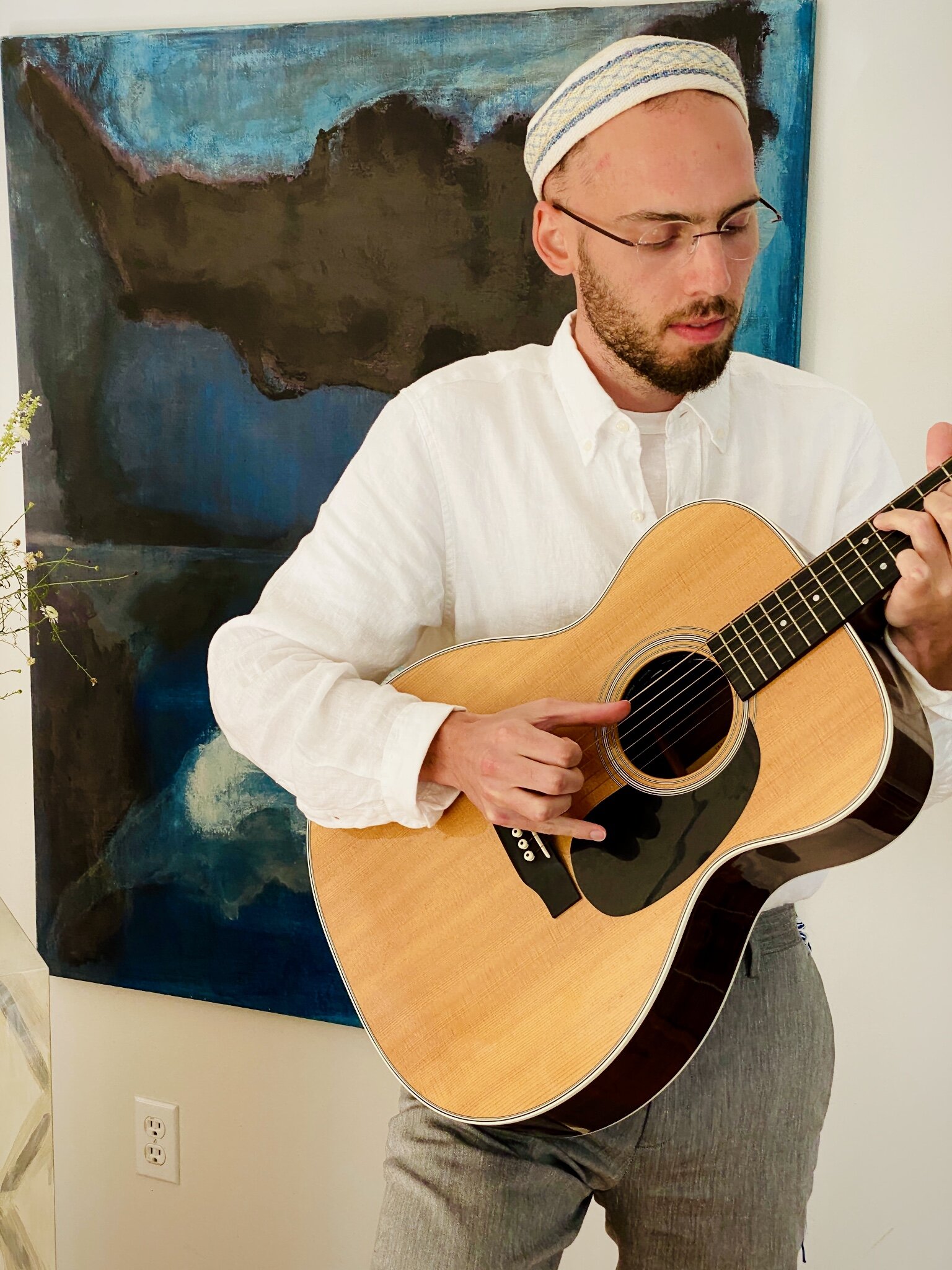Installation detail: “The Axiom of Maria, The Jewess of Alexandria (The Inventor of Alchemy),” Samuel Abelow, 2020.
Installation: “The Axiom of Maria, The Jewess of Alexandria (The Inventor of Alchemy)”
Axiom of Maria: Speaking of the union of opposites: “Join the masculine and the feminine, and you will find what is sought.” “One becomes two, two becomes three, and out of the third comes the one as the fourth.”





The contemporary artist is tasked with reintegrating the multitude of past art movements, resolving disassociated conflicts, into a greater whole. A multicultural, multifaceted — that is, a comprehensive approach — is thus the progression beyond arbitrary obsessions & expressions of dualism, towards a greater union of self — intrapsychic, interpersonal, and transpersonal.
By Samuel Abelow
Edited by Johannes Böckmann
Installation: Artist’s Description
I. Sensation: Clothing // II. Intuition: Original song, “Epic Meltdown” // III. Feeling: Original “Orphic” vase, with custom-made “ORIGINS” pedestals, hand painted in acrylic paint, 2019. // IV. Thinking: “Black, White, Blue” D. Abelow, acrylic on canvas, approx. 38 x 50 inches, 1979.
Through mapping color, as symbol for personality expression in art, we have seen the potential towards a greater understanding of ourselves and a realization of humanity's ultimate purpose — fulfilling its nature by way of culture. We have also introduced the idea that it is artists who raise culture to a higher state by working to resolve personal and cultural tensions. The unresolved tensions in society, are experienced as burdens on the suffering masses. This dynamic activates archetypal complexes, so that individuals act on the world stage, on behalf of unconscious forces. Schisms become massive rifts, and the fault lines of culture reach a peak of intensity; this pushes artist’s — those open to the depths — to discover the path towards integration, which is an “ultimate marriage” of impossible opposites.
In painting, the artists struggle to realize this ultimate marriage in a myriad of ways. But, basically, they represent their instinctive processes in figurative and narrative productions, or else in ornate patterning and pure abstraction. Whatever the tendency, the works always convey some orientation of unresolved opposites.
Artist’s compositions, which express underlying vital interest, will tend more towards either figuration or abstraction, being expressions of the tendency to favor either the archetypal masculine or feminine function. Thus, both aspects will be present in most works, the overall emphasis revealing the artist's particular orientation to the larger dualism.
Works marked more-so by the lower world (feminine), will be figurative, below the veil of unified dualism. Here, the conflict of opposites results in fascination, allure and seduction into the images and, especially, “beauty” itself. In fact, the figure and representational art in general — just to speak of painting — is a reflection of the multitude found in the lower realm (the complexes of the unconscious). The upper realm suffers.
Photograph by Johannes Böckmann: “Samuel at the Les Nabis et le décor exhibit, Musee du Luxembourg”
Works marked more-so by the upper world (masculine), will be conceptual and often nihilistic, resulting in a dry, or detached, “blue-chip” attitude. Generic abstraction — especially minimalistic works — represents an even headier version of this obvious one-sidedness, as to where the concept and ideology is completely overvalued. In general, smug nihilism and starkly reductive mindsets are the active complexes here. As spirit is a formation of nothingness that emerges from physicality, it tends to forget about its bodily base and move towards its nature of nihil. However, this above-it-all progression upwards, which disregards the obvious presence of the lower, results in a more subtle realization of material, color and light.
Let us, at this point, delve deeper into the upper realm scenario: Look at the SHEMAH chart, upper right quadrant (IV) which begins with the color blue. This blue is symbolic of the intellect. Here artists tend to create elaborate ideological systems which result in illustrative, surrealist-type compositions. This perfectionism, emphasizing academic tradition, is dissociated from the feeling and earthiness of the lower realm. Similarly, Minimalism, which often emphasizes white and blue, especially ultramarine, is another example of dissociated high-flying ideas. The term “Blue-Chip-Art” comes in quite handy here. As a painting can be worth $10 Million Dollars and then $10 after a decade.
The “blue chip” attitude brings forth works that are assigned worth purely by ideas that come and go as quickly as the wind or sky, because they have no essential rootedness, or value to Life (that is, the feminine).
Now, look to the full chart: the ultimate value, says the alchemist, is red, the womans natural life; that is what leads to the gold.
The contemporary artist is tasked with reintegrating the multitude of past aesthetic and ideological developments (art movements), to resolve the disassociated conflicts, into a greater whole. A multicultural, multifaceted — that is, a comprehensive approach — is thus the progression beyond arbitrary representations of “conflict”, towards a greater union of self — intrapsychic, interpersonal and transpersonal. Failure to achieve this integrated state of artistic realization is essentially due to the tendency towards shallow persona and narcissistic identification, and thus shadow projection — onto all other systems, ideas and cultural situations.
In the next installment of this series of essays we’ll look at the “Art of Integration,” as applicable to the individual involved in this cultural work of becoming.
Further reading:
Otto Rank, “Art & Artist: The Creative Urge and Personality”
Nancy Qualls-Corbett, “The Sacred Prostitute”
CG Jung, “The Spirit of Man in Art & Literature”


